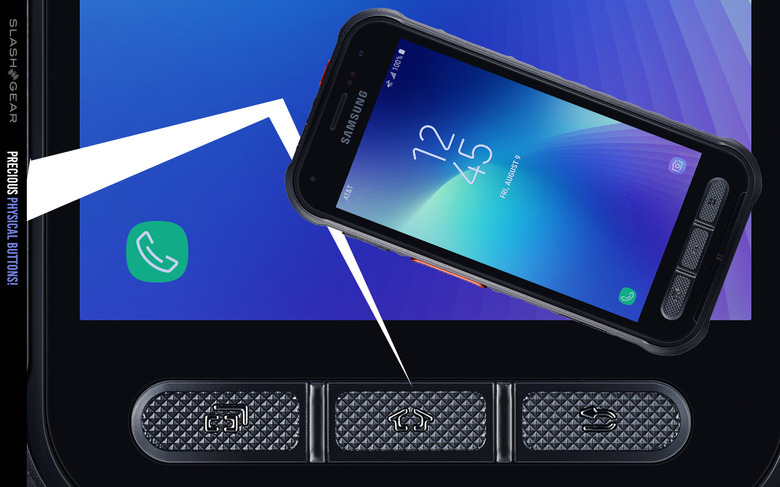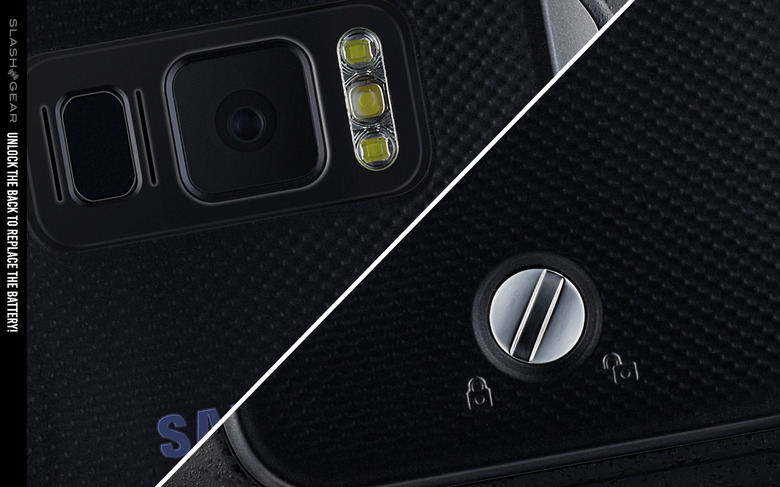Next Samsung Galaxy Phone Has Removable 4500mAh Battery
The Samsung Galaxy Xcover FieldPro is the essential Samsung phone – more so even than the Galaxy S10e ("e" stands for "essential"). The device was introduced this week as a rugged phone made for government agents and first responders, but really, it looks like it'll be the perfect smartphone for someone who wants a perfect blend of "does new stuff" and "it just works." This is probably going to be your baby boomer dad's dream phone.
They call this the "Samsung Galaxy Xcover FieldPro", which just a bit convoluted for a phone name, but they could just as easily have called it the Samsung Galaxy S9 "Active" or "Rugged." It's that because of MIL-STD-810G military-grade ruggedness for anti-shock action and it's got IP68 Water and Dust Resistance (that's "submersion in clear water up to 1.5 meters for up to 30 minutes".) Per Samsung, "This device passed military specification (MIL-STD-810G) testing against a subset of 21 specific environmental conditions, including temperature, dust, shock/vibration, and low pressure/high altitude."

It's not running with the newest processor under the hood, nor the newest camera, instead making use of some parts Samsung's previously deployed with the Galaxy S9 (instead of this year's Galaxy S10). This device has a 5.1-inch QHD display (that meants 2560 x 1440, more than enough sharpness for this display size). The Galaxy S10 has a "pixels per inch" sharpness that's slightly better than this phone, but this phone is slightly better than the Galaxy S9. Galaxy S9 has 570PPI, FieldPro has 576PPI, and Galaxy S10 has 550PPI.
The display is also flat, and rectangular. None of this curved-edge business, or this curved-corner business. Just hardcore, decent, regular flat rectangle business. It's not entirely clear whether this device comes with Android O or Android P, but Samsung IS clear that it'll "support OS upgrade to Android Q".
This device has the same processor as the Galaxy S9 – that's the Exynos 9810 (10 nm), with 4x2.7 GHz Mongoose M3 & 4x1.8 GHz Cortex-A55 CPU cores. The same GPU is here, too – that's the Mali-G72 MP18. There's a similar camera array on the back that's not identical to the S9, but is still pretty impressive: 12.0MP AF (Dual Aperture) with 3x LED flash, and there's an 8-megapixel camera up front.

The backside has a fingerprint reader and a removable panel. The panel can be removed with a flat-head screwdriver (or likely a small coin, if you'd like), and the battery inside is replaceable. Each battery for this device is 4500mAh – that's pretty massive. Especially considering the battery for Galaxy S9 was 3000mAh, and the Galaxy S10 was just 3400mAh.
The only unfortunate bit about this phone is the possibility that it might not be available to the public. It supports Band 14, which is FirstNet, a radio band made specifically for first responders, and has physical push-to-talk and emergency request buttons. Also, per Samsung, "The defense-grade Samsung Knox security platform is CJIS, HIPAA and FIPS compliant and is also certified for use by the federal government, based on standards set by the National Information Assurance Partnership," – it has Knox onboard (which isn't unique to this device, but is certainly still important.)
As Samsung's introduction for this piece is aimed at first responders and such, they've not yet revealed the pricing for the unit. They've also not yet revealed any sort of release date – but it'll quite likely be inside this year of 2019.
